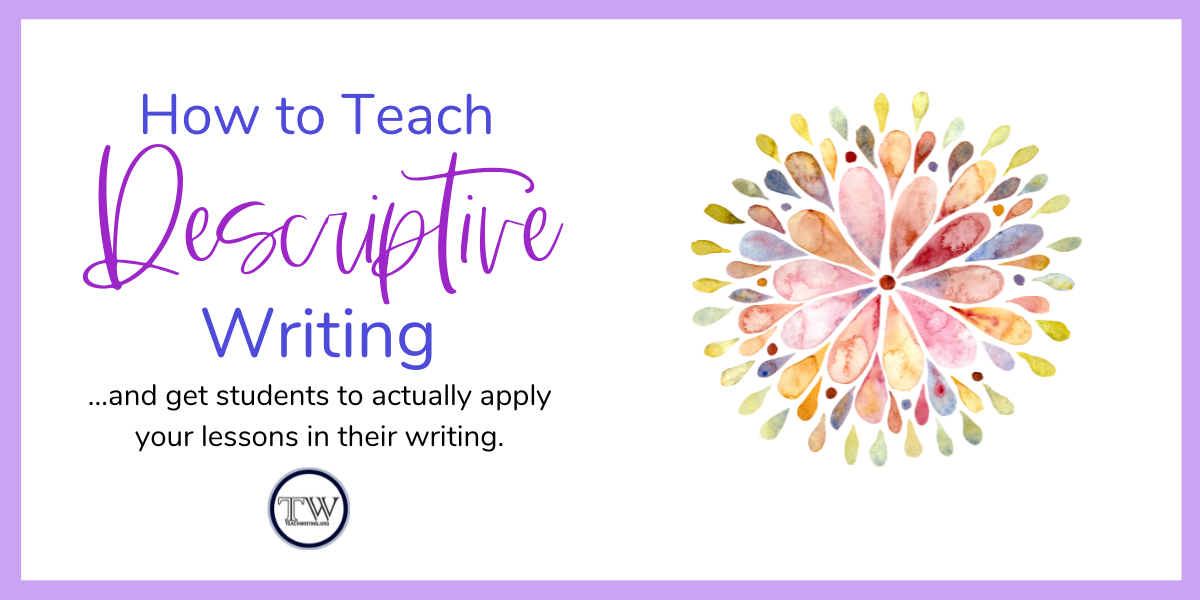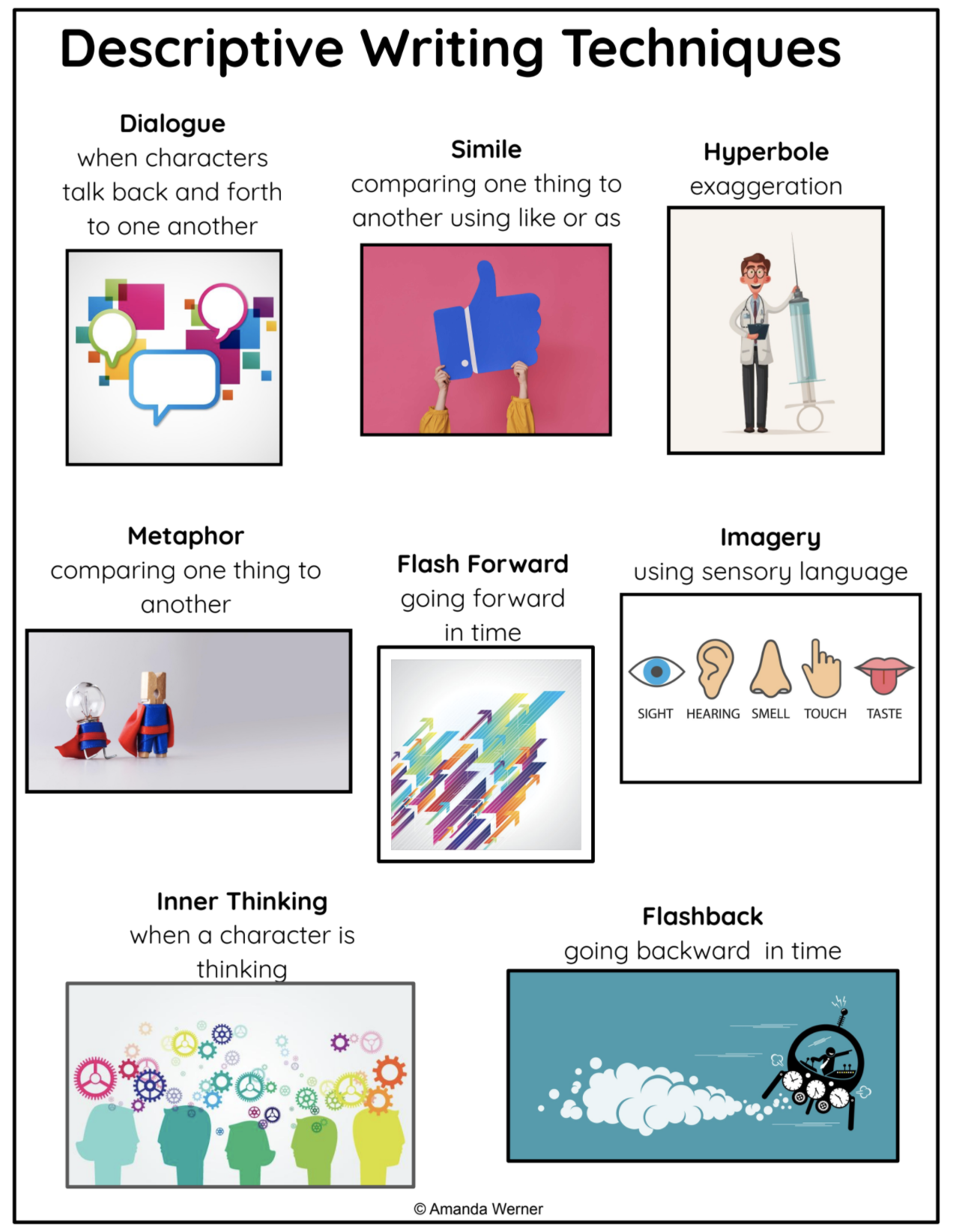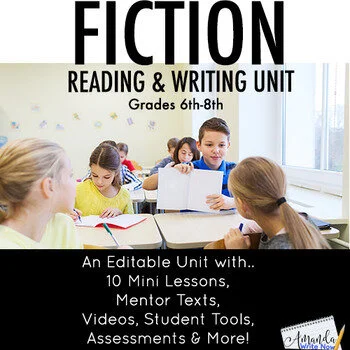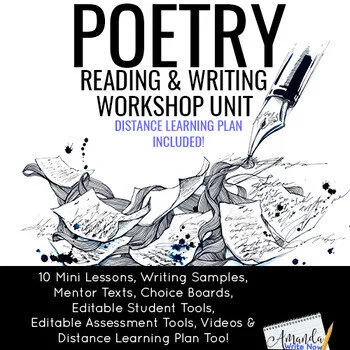How to Teach Descriptive Writing
Descriptive writing does not come naturally to most of us. This is because when we tell stories orally, we often leave out the details (because we’ve forgotten them in most cases). It takes effort, bravery and a lot practice to master the art of descriptive writing. In this blog post you’ll learn three simple things you can do to get your students on the path to writing more descriptively! And no, none of these strategies involve saying to your students, “show, don’t tell”. That strategy hasn’t really worked for me and I’m assuming it hasn’t for you either...
Reveal The TRUTH About Details
If you’ve ever tried to write a personal narrative, memoir or fictional story, then you know that the details are most often made up! The thing is that a lot of students don’t realize this. They think they have to be as accurate as possible when telling stories from their own lives.
Have you ever noticed, that when students write fiction, descriptive writing seems to come more naturally? That’s because students feel the liberty to make things up when writing fiction. But, when writing about their own lives, students are stumped about how to tell their story and often say things like, my story isn’t that interesting. I explain that it’s their job as the writer to make it interesting by making the details up.
Below, I’ve included an example from a story I wrote about my childhood. I highlighted the parts that are exaggerated and quite possibly made up for the sake of writing descriptively:
Ms. Perez stood at the front of the room and announced, “Today is an exciting day, you get to find out what reading group you are in!”. Her hands were crossed in front of her black and white polka-dot dress and her eye glasses covered most of her face.
Ms. Perez seemed mean at first with her short jet black hair, bright red lipstick and black eyeliner but I came to know her as a kind and patient teacher. She smiled often and spoke softly.
Telling your students that when we write descriptively we have to make the details up can be very freeing! Try it out and see what happens.
Read Relatable Poetry
Poetry is short and filled with wonderfully descriptive writing. But, it can be hard to find poems that resonate with students and don’t require a lot of analysis and discussion to understand. Below are a few of my favorite relatable poems to teach descriptive writing techniques.
Where I’m From by Melanie Poonai
Ode to French Fries by Pablo Neruda
On Laughter by Yesika Salgado
My Papa’s Waltz by Theodore Roethke
Oranges by Gary Soto
When you teach descriptive writing with poetry you need to read the poem aloud to students, multiple times. The first time, read it all the way through without stopping, this is called a cold read. The second time, tell students to pay attention to the descriptive language in the poem, ask students where in the poem their senses are activated. Review the five senses if you need to. The third time, have students pick their favorite descriptive line to share with their group or the class. The next step is to try imitating the descriptive writing…
Practice Imitating
Students need quick, low stakes opportunities to practice descriptive writing. One of the best ways to do that is to have students imitate descriptive line(s) of poetry. But, first you as the teacher must model this process. Here’s an example you can use if you’d like.
Imitation:
On Being Present
by Amanda Werner
Sometimes I pay such close attention to the present that the world stops spinning. I feel with all my body. I feel the hard bottoms of my feet. the delicate tips of my fingers. warm breath flowing through my nose. fresh air soothing my throat. in my chest. circling my heart. expanding. and it all comes out again. All at once. I am here, now. not in my head. thinking. I like myself best when I’m paying attention to now. feeling. all of me. the best of me.
Original Poem:
On Laughter
by Yesika Salgado
Sometimes I laugh so hard the world spins. I laugh with all of my body. the arms. the toes. the back of the knees. the place where elbows fold. the lumpy shoulders. the belly like a sack of crumbled clothes. the tonsils. the hip bone. it all explodes at once. I can’t breathe then (the lungs are busy laughing too). My eyes drop a few drops of sky and I shake and shake and shake. I like myself best when I’m laughing. bursting. all of me. the best of me.
It’s important to teach students that they can imitate any part of the poem they would like. In my imitation I chose to write about a different topic around the similar theme of what I like best about myself. I imitated beginning with the word “Sometimes I…” and I used incomplete sentences throughout.
Teach Different Techniques
The sooner students learn about how to use imagery, metaphors and other techniques to expand on their ideas, and write descriptively, the better!
But, how do we go about teaching students the techniques listed on this poster? And more importantly, how do we get students to actually use these techniques in their writing?
It all takes modeling, guided practice, feedback and more practice! Use this lesson sequence each time you teach a new descriptive writing technique:
Tell students that today they are going to learn about a new technique to write more descriptively.
Show a mentor text that demonstrates the strategy at play.
Ask students to share what they notice.
Ask students to name the strategy if they can.
Model using the strategy in your own writing.
Have students practice using the strategy in their own writing.
Provide feedback to students about their use of the strategy via Google Classroom private comments.
Repeat the process!
Related Articles
4 Mini Lessons for Teaching Suspense Writing
Poetry Activities to Heal Trauma
RElated Resources
About the Author
Amanda Werner has been teaching for 13 years and still feels like a novice. Every year is a unique and exciting challenge to inspire a new group of students to become avid readers and writers. Amanda reads educational literature voraciously and writes about the teaching of reading and writing on her website amandawritenow.com. Amanda received her B.A. in English Literature with an emphasis in Humanities at Western Washington University. In her free time, Amanda loves being outdoors with her husband and daughter.






